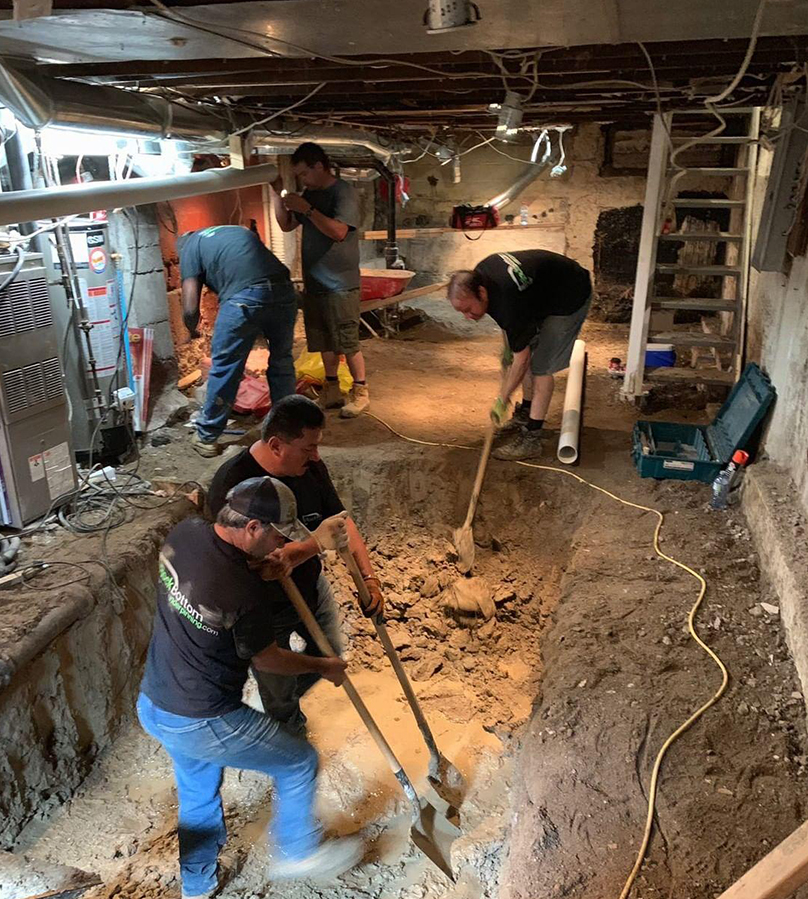Introduction:
Building a basement under an existing house can provide valuable extra living space and enhance the functionality of your home. Two crucial techniques must be implemented to ensure a successful basement construction: underpinning and waterproofing. This guide will explore these techniques and discuss their importance in creating a structurally sound and watertight basement. Additionally, we will touch upon the services offered by basement waterproofing specialists and basement underpinning contractors in Toronto.
1. Underpinning Technique:
Underpinning is a process used to strengthen the foundation of an existing structure to support the additional load imposed by a basement. This technique involves excavating the soil beneath the existing foundation and constructing new footings or extending the existing ones. Here’s an overview of the underpinning process:
a. Initial Assessment: A professional basement underpinning contractor in Toronto will assess the existing foundation and determine its capacity to support a basement. This evaluation helps identify any potential risks or challenges.
b. Excavation: Once the assessment is complete, excavation begins. The soil is carefully removed in sections, and temporary support systems such as shoring or piling are installed to maintain the stability of the structure.
c. Underpinning Construction: After excavation, the underpinning process commences. Reinforced concrete footings are constructed beneath the existing foundation to increase its load-bearing capacity. The depth and design of the footings are determined based on engineering calculations specific to the project.
d. Monitoring and Completion: Throughout the underpinning process, monitoring devices ensure the structure remains stable. Once the underpinning is complete, the temporary supports are removed, and the basement construction can proceed.
2. Waterproofing Technique:
Basement waterproofing is crucial in preventing water infiltration and ensuring a dry and habitable space. Toronto basement waterproofing specialists employ various techniques to safeguard the basement against moisture. Here are some commonly used waterproofing methods:
a. Exterior Waterproofing: This method involves excavating the soil around the foundation walls to expose them. The walls are then cleaned, repaired, and coated with a waterproofing membrane. Exterior drain systems, such as French drains, are installed to redirect water away from the foundation.
b. Interior Waterproofing: In cases where exterior waterproofing is impractical, interior waterproofing methods are employed. This includes installing an interior drainage system along the perimeter of the basement floor to collect and channel water to a sump pump. The walls may also be treated with waterproofing coatings or sealants to prevent moisture penetration.
c. Moisture Control: Proper moisture control measures, such as installing vapor barriers and adequate insulation, help regulate humidity levels in the basement. This prevents condensation and reduces the risk of mould and mildew growth.
Conclusion:
Building a basement under a house requires meticulous planning and implementing underpinning and waterproofing techniques. Hiring professional basement underpinning contractors and basement waterproofing specialists in Toronto, such as Rock Bottom Underpinning, is essential to ensure the basement’s structural integrity and long-term durability. By incorporating these techniques, you can create a functional and secure living space that adds value to your home.
Before undertaking a basement construction project, remember to consult with local experts, like Rock Bottom Underpinning, and obtain the necessary permits and approvals.


